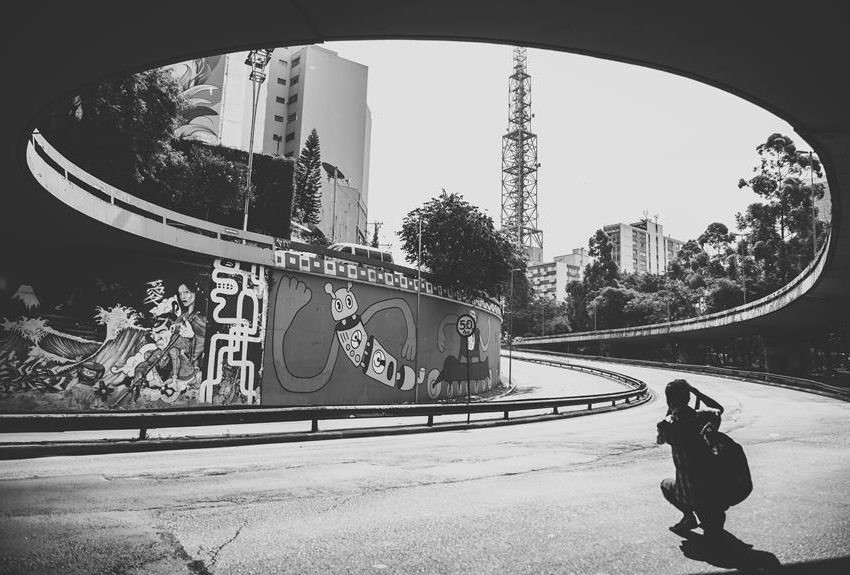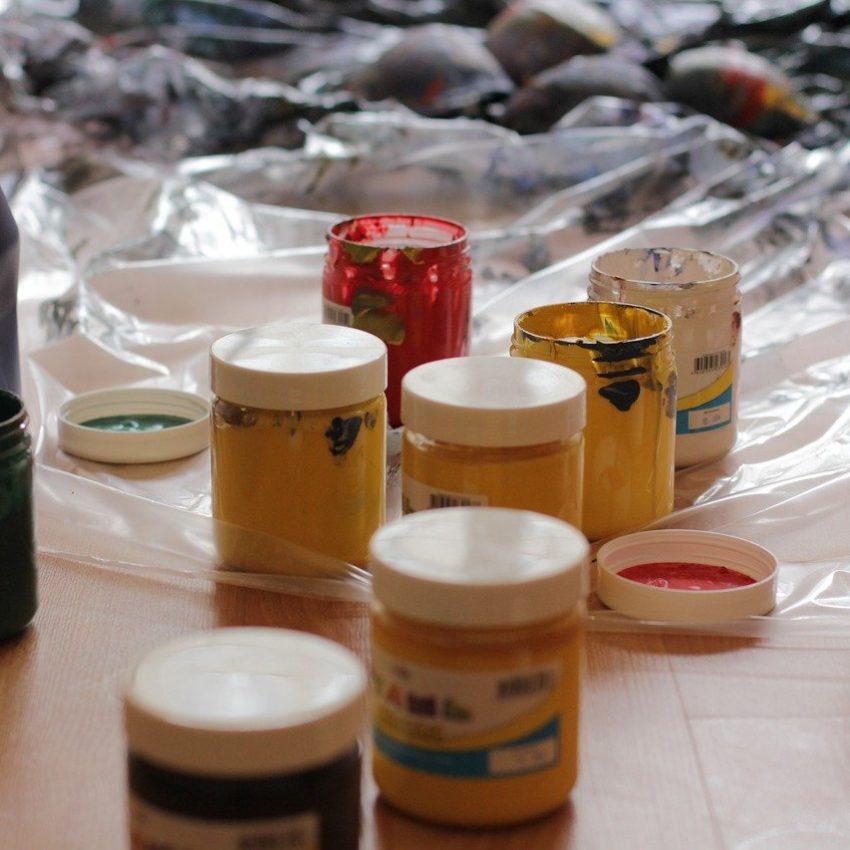Meshes of the Afternoon, 1943
Maya Deren and Alexander Hammid
Have you ever entered a world where time and reality intertwine in mesmerizing ambiguity? Enter the enigmatic realm of “Meshes of the Afternoon,” a groundbreaking film transcending conventional storytelling.
This experimental masterpiece, crafted by Maya Deren and Alexander Hammid in 1943, is not just a movie—it’s an experience that challenges perceptions of cinema itself.
Introduction
In the avant-garde tapestry of experimental cinema, “Meshes of the Afternoon” is a beacon of creativity and innovation. Its significance lies in its narrative techniques and its profound impact on the exploration of dreams, identity, and symbolism within art, much like how Deren became the preeminent voice in discussing these themes through her films.
By delving into the intricate layers of this cinematic gem, we unravel not just a film but a portal to an alternate dimension where every frame whispers secrets waiting to be deciphered, a narrative technique admired by experimental filmmakers.
Join us as we embark on a journey through the labyrinthine corridors of this timeless classic—prepare to be captivated, enlightened, and forever transformed by the mystique of “Meshes of the Afternoon.
Plot
Maya Deren encounters a stranger on her walk home, then drifts into a dream upon falling asleep in her chair. In this dream, she futilely pursues a mysterious figure with a mirror for a face.
Returning to her house with each failure, she encounters symbolic household objects. The pursuit leads her to her bedroom, where she witnesses the figure concealing a knife.
She encounters various versions of herself, reliving fragmented moments of the dream, a concept played by Deren throughout the film.
Desperate to break free from the dream’s grip, she attempts self-harm but is awakened by Alexandr Hackenschmied.
Reality blurs further as she realizes the events from her dream are unfolding before her. Suspicions arise when Hackenschmied’s actions mirror those of the hooded figure, an allusion possibly inspired by film noir elements and directly referencing the mysterious hooded figure central to Deren’s narrative.
Surrealistic motifs punctuate the narrative, symbolizing the struggle to discern reality, a theme explored by experimental filmmakers and represented in the Museum of Modern Art collections.
Ultimately, the film’s cyclical narrative and haunting imagery paint a disorienting portrait of a world where reality slips through one’s grasp, a testament to American experimental cinema.
Deren explained her approach to filmmaking as an exploration of the unconscious mind, using cinematic devices to evoke critical emotional experiences within the viewer.
“Meshes of the Afternoon” embodies this philosophy, immersing audiences in a dreamlike narrative where the boundaries between reality and fantasy blur.
The mirror-faced figure haunting the protagonist serves as a symbolic manifestation of her inner turmoil, reflecting the fragmented nature of the human psyche.
Through innovative storytelling techniques and a surrealist aesthetic, Deren and Hammid paved the way for a new era of cinematic expression, influencing filmmakers of the new American cinema and beyond.
Production and Background
The genesis of the film stemmed from Maya Deren’s and Alexander Hammid’s aspiration to craft an avant-garde, introspective work delving into intricate psychology, akin to the surrealist masterpieces “Un Chien Andalou” (1929) and “L’Age d’Or” (1930) by Salvador Dalí and Luis Buñuel.
Deren, alongside Hackenschmied (later Alexander Hammid), co-wrote, directed, and starred in While Deren is typically credited as the primary creative force, filmmaker Stan Brakhage, a friend of the couple, suggested in his book “Film at Wit’s End” that “Meshes” was primarily Hammid’s brainchild, leading to strain in their marriage as Deren received more recognition.
However, other sources suggest Hammid’s contribution was mainly as a cinematographer, with Deren’s meticulous storyboarding and directorial vision driving the project forward. Hammid acknowledged Deren as the sole creator of “Meshes of the Afternoon.”
Initially, the film lacked a musical score. Still, in 1959, Deren’s third husband, Teiji Ito, introduced a score influenced by classical Japanese music, further cementing its status in the avant-garde film movement.
In 1990, “Meshes of the Afternoon” earned a place in the United States National Film Registry for its cultural, historical, and aesthetic significance. It ranked 40th on the BBC’s list of the greatest American movies in 2015 and secured the 16th position in the Sight & Sound poll’s 2022 ranking of the greatest films of all time.
Exploring the Dream Sequences
Enter the enigmatic realm of “Meshes of the Afternoon”, and you’re immediately drawn into a world where dreams intersect with reality in mesmerizing ways.
The dream sequences in this experimental film are a central focus, blurring the lines between consciousness and the subconscious. As we delve into these sequences, we’re confronted with a surrealistic tapestry where time, space, and logic intertwine to create a hauntingly beautiful narrative.
Through intricate imagery and symbolic representations, director Maya Deren crafts a unique visual language that challenges viewers to question their perceptions of reality, much like the original print of her first film which broke new ground in visual storytelling.
Surrealism and symbolism form the backbone of the dream sequences in “Meshes of the Afternoon.”
Each scene is carefully constructed to resonate on multiple levels – from playing with fragmented narratives to incorporating symbolic objects like keys and mirrors with more profound meanings.
These dreams are not just random occurrences but deliberate explorations of the human psyche, a concept Deren explained that she wanted to interrogate through her filmmaking.
By tapping into our subconscious, Deren takes us on a journey that transcends traditional storytelling, inviting us to interpret these visuals through our subjective lenses.
Impact of Dream Sequences
The impact of these dream sequences extends far beyond mere cinematic aesthetics; they evoke introspection and invite viewers to analyze their interpretations.
By challenging conventional narrative structures and embracing ambiguity, “Meshes of the Afternoon” prompts audiences to engage profoundly with themes of memory, identity, and perception.
The power lies not just in what is seen on screen but in how it resonates within each viewer’s mind long after the film ends. This timeless quality is what sets this film apart as a masterpiece in experimental cinema, leaving an indelible mark on those who dare to unravel its enigmatic world.
The Female Protagonist: A Deep Dive
In the way in which the subconscious realm of “Meshes of the Afternoon,” the female protagonist, played by Maya Deren herself, takes centre stage in this surreal exploration of identity, memory, and perception. As viewers delve into her world of mysterious encounters and dreamlike sequences, they are invited to unravel the complexities of her character beyond traditional storytelling conventions. The protagonist’s journey symbolizes a profound introspection into the psyche, where notions of self-discovery and emotional depth intertwine with themes of femininity and empowerment.
Through the lens of this enigmatic character, the film delves into broader discussions on identity and gender roles, areas deeply explored in the works made by Deren. The intricate web of symbolism woven throughout the narrative prompts viewers to contemplate the protagonist’s story and their own understanding of self. By breaking away from linear narratives and embracing abstract forms of storytelling, “Meshes of the Afternoon” challenges conventional cinematic portrayals of women, paving the way for feminist perspectives in cinema. The protagonist’s agency and complexities serve as a beacon for exploring nuanced aspects of womanhood beyond simplistic archetypes.
Summary
Deren’s portrayal captures a sense of vulnerability juxtaposed with resilience—an embodiment of strength amidst ambiguity.
Her presence on screen, played by Deren, evokes a powerful interpretation transcending mere visual representation; it becomes a statement on autonomy, subjectivity, and the fluidity of perspectives throughout the film.
This deep dive into the female protagonist’s character adds layers to the film’s thematic richness and establishes a lasting influence on how filmmakers approach depicting women in avant-garde cinema. She remains an enduring emblem of artistic exploration and feminist discourse within experimental filmmaking.
Visual Storytelling Techniques
In “Meshes of the Afternoon,” Maya Deren and Alexander Hammid utilize innovative storytelling techniques that have left an indelible mark on experimental cinema.
Unlike traditional narrative structures reliant on dialogue, this film, much like Deren’s first film, harnesses the power of visuals to convey deep-seated meanings and emotions.
One striking example is repetitive imagery, where everyday objects morph into symbols loaded with significance, transcending their literal representations. This visual language invites viewers to engage in a more reflective interpretation of the film’s narrative.
Moreover, the filmmakers’ employment of surreal and fragmented sequences challenges conventional storytelling norms.
By intertwining dream logic with reality, they craft an atmosphere rich in symbolism and ambiguity, reminiscent of the narrative complexity of films showcased at the Museum of Modern Art and echoed in the intricate storytelling.
For instance, the looping motif of the key creates a sense of disorientation yet beckons viewers to unravel its cryptic meaning—a testament to how visuals can evoke thought-provoking responses without explicit exposition.
This departure from linear storytelling captivates audiences and invites them to actively participate in constructing their understanding of the film’s enigmatic world.
summary
Compared to traditional cinematic approaches, “Meshes of the Afternoon” demonstrates a profound shift in how stories can be told visually. The absence of verbal cues necessitates a heightened focus on non-verbal communication through mise-en-scène and cinematography.
Every frame becomes a canvas for intricate visual metaphors and allegories, emphasizing the potency of images as standalone narratives.
This deliberate departure from dialogue-driven storytelling underscores the filmmakers’ commitment to pushing boundaries and challenging spectators to embrace unconventional modes of visual storytelling at the heart of avant-garde cinema.
Soundscapes and Atmosphere Building
When delving into the mesmerizing world of “Meshes of the Afternoon,” one cannot ignore the pivotal role that soundscapes play in creating an immersive ambience. The film masterfully weaves visuals and audio elements together to evoke an otherworldly atmosphere long after the screen fades to black, a strategy similarly employed in Through a symphony of sounds, from eerie chimes to haunting whispers, viewers are drawn into a realm where reality blurs with dreams.
Sound design in experimental cinema like “Meshes of the Afternoon” goes beyond mere background noise; it guides emotions and perceptions. Take, for instance, the recurring motif of footsteps echoing down empty corridors—a subtle yet powerful auditory cue that heightens tension and underscores the protagonist’s sense of disorientation. Such nuanced sonic details enhance the viewing experience and infuse layers of meaning into each frame.
summary
In experimental filmmaking, where traditional narrative structures often take a back seat, soundscapes serve as silent storytellers, conveying emotions and moods without relying on dialogue. In “Meshes of the Afternoon,” the interplay between visuals and sounds creates a multi-sensory journey for audiences, immersing them in a realm where every rustle or repercussion is significant. This meticulous attention to sound design underscores the importance of holistic sensory experiences in shaping cinematic art that transcends boundaries and leaves a lasting impact on those who dare to venture into its enigmatic depths.
Legacy and Influence on Modern Cinema
“Meshes of the Afternoon” holds a cherished place in cinematic history, not only for its innovative storytelling techniques but also for its lasting influence on contemporary filmmakers.
Directors like David Lynch and Christopher Nolan have cited Maya Deren’s masterpiece as an inspiration for their groundbreaking works.
The dreamlike quality, non-linear narrative, and emphasis on psychological depth found in “Meshes of the Afternoon” have paved the way for a new wave of storytelling in modern cinema.
In avant-garde filmmaking, “Meshes of the Afternoon” remains a touchstone for artists pushing the boundaries of traditional cinematic conventions.
Its experimental approach to narrative structure and visual storytelling has encouraged filmmakers to explore unconventional ways of conveying meaning and emotion, marking its significance to experimental filmmakers.
By challenging established norms, this film inspires avant-garde creators to push beyond the expected and delve into the realms of the surreal and subconscious.
Summary
Despite being created over seven decades ago, “Meshes of the Afternoon” retains its relevance in today’s cinematic landscape. Its exploration of identity, memory, and perception resonates with audiences seeking more than just surface-level entertainment.
In an era where audiences crave thought-provoking content transcending conventional storytelling, Deren’s film is a beacon of innovation and artistic daring, recognised when the film was selected for preservation in the film registry by the Library of Congress.
The enduring impact of “Meshes of the Afternoon” reaffirms its status as a timeless classic that continues to captivate and inspire filmmakers and viewers alike.
The Timeless Allure of "Meshes of the Afternoon"
In delving into the enigmatic world of “Meshes of the Afternoon,” we’ve journeyed through layers of surrealism, symbolism, and visual storytelling that transcend conventional cinema.
The dream sequences have entertained and challenged viewers to question reality and meaning in ways that linger long after viewing.
The female protagonist’s exploration of identity and perspective has sparked conversations on gender roles and narratives in film, profoundly impacting feminist perspectives.
CONCLUSION
As we wrap up our exploration, it becomes evident that the legacy of “Meshes of the Afternoon” extends far beyond its avant-garde roots.
Its innovative techniques, from inventive storytelling to atmospheric soundscapes, continue to inspire contemporary filmmakers seeking new realms of cinematic expression.
This seminal work remains a beacon of creativity for film enthusiasts and artists alike, inviting us to unravel its mysteries repeatedly, ensuring its enduring allure for future generations.
“Meshes of the Afternoon” stands as one of the most influential works in American experimental cinema, known as the New American avant-garde movement of the 1940s.
This short film, directed by Maya Deren and cinematographer Alexander Hammid, established itself as a key example of avant-garde filmmaking, concerned with the interior experiences of an individual.
Through its subjective camera work and dreamlike state, the film reproduces the way an individual will develop thought patterns and subjective experiences, echoing Jungian theories of the unconscious mind.
In 1990, “Meshes of the Afternoon” was recognized by the Library of Congress for its cultural and historical significance, cementing its status as a preeminent voice of avant-garde cinema in the United States.
This acknowledgment was due to its new and startling use of standard cinematic devices, such as matte shots, as well as its extensive writings on the uncanniness of subjective focus.
As the central figure, Maya Deren’s portrayal encapsulates the feeling which a human being experiences about an incident, weaving a narrative that challenges conventional storytelling norms.
From her futile attempts to catch the cloaked figure to her desperate actions against her sleeping body, Deren puts on film the subjective experience of grappling with reality and perception.
“Meshes of the Afternoon” continues to inspire major experimental filmmakers, such as Barbara Hammer, and has left an indelible mark on avant-garde cinema worldwide.
Its screening at the 1947 Cannes Film Festival solidified its reputation as a groundbreaking work, paving the way for future exploration of the interior landscape of the human psyche in film.











